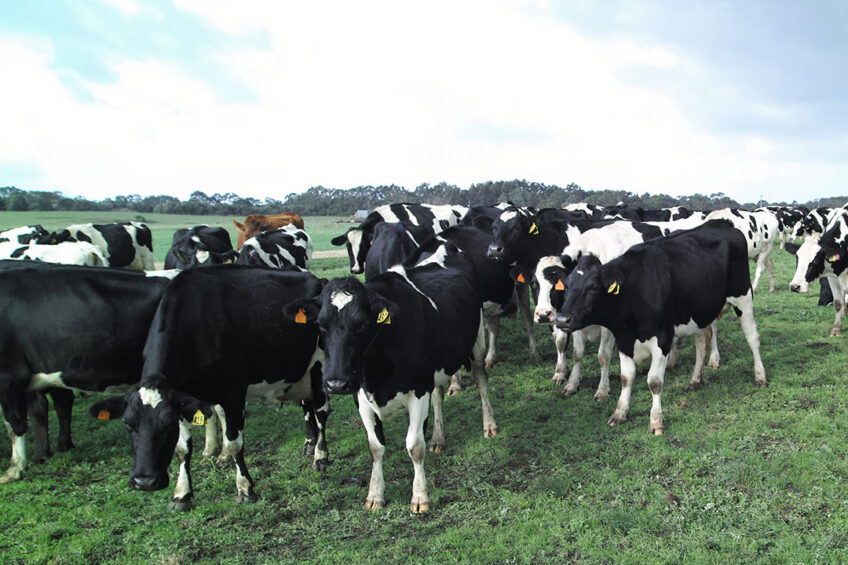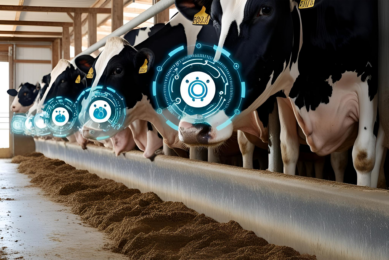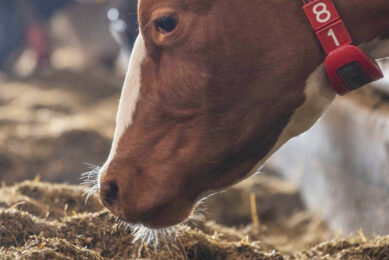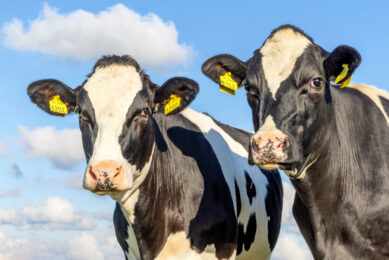Australia: Working on the cows of the future

Victorian scientists in Australia will be working on methods to reduce the environmental footprint of the Australian dairy cow and to create a more profitable and sustainable dairy sector.
The government of Victoria in Australia has launched a US$41 million, 5-year research partnership with the dairy industry as part of its Transformational Agriculture Strategy. F1 hybrids and gene editing will be the focus in the forage programme, and new traits and improved selection in the animal programme.
Increase sustainability and profitability
The so-called Future Forage Programme will develop new and improve existing forage varieties and species to support the dairy industry as farm systems change and adapt to climate variability and volatility. The Future Cows programme will focus on farmer-selected trait and breeding priorities and will use the advances in animal monitoring to provide new tools for profitable adaption to future farms.
These cows may not look much different to the cows you see today, but they’ll be more profitable for dairy farmers, for a longer time.
According to principal research scientist, Professor Jennie Pryce of Agriculture Australia, who is leading the DairyBio animal program, the traits of the cows of the future will need to increase the sustainability and profitability of dairy farms.

“The cows of tomorrow will have lower methane emissions per litre of milk produced and they will live longer, produce healthier calves, have good metabolic efficiency and low maintenance requirements,” Pryce says. “These cows may not look much different to the cows you see today, but they’ll be more profitable for dairy farmers, for a longer time.”
Breeding more efficient cows
Pryce emphasises that breeding long-lasting cows that are more efficient and produce fewer greenhouse gas emissions is crucial, not only to the industry’s sustainability in the future, but also to improving public perception of dairying.
The plan that will lead to a tool that farmers can use is being co-developed with DataGene. This will enable the use of a combination of dairy cow traits that contribute to profitability and social acceptance, helping producers to make decisions about which cows from their herds and bulls or bull semen they should select to produce progeny with improved resource efficiency.
Pryce says that the research will help farmers identify cows and bulls with the best environmental credentials without taking a hit on breeding for profitability. “This is because the traits that we found are linked to lower emissions, such as feed efficiency and longevity, are also important drivers of farm profitability.”
Farm report, Australia: Aiming to breed the perfect cow
Queensland dairy farmer Paul Roderick is on a mission to fine-tune his breeding to produce the perfect dairy cow that is matched to his farm. Read more…
Agriculture Minister Mary-Anne Thomas of Victoria, who launched the programme, called DairyBio 21-26, says it will support Australian scientists to meet the challenges facing the Victorian dairy industry head-on. “And to deliver practical solutions to our dairy farmers as they adjust to operating under a changing climate,” she points out.
Practical solutions, gaining with future cows
The programme is designed with what industry and climate and systems modelling have told what farmers need in 2040 and 2050. Cows will need to be more profitable. They will be more resilient to the changing climate in Australia and provide greater flexibility in replacement decisions. The programme will accelerate the annual rate of genetic gain in dairy cattle by 1.5 times.
Dairy farmers should gain US$248 per cow in the future cows that are developed. Their emissions should be reduced by 10%. The cows will also be able to adapt to warming faster.
“The really important things to remember about genetic gain is that it is cumulative and permanent,” Pryce explains. “In other words, it compounds in your herd forever. While feeding and management are important, the greatest permanent gains you can make in your herd is to select and breed with superior parents.”
According to the programme, dairy farmers should gain US$248 per cow in the future cows that are developed. Their emissions should be reduced by 10%. The cows will also be able to adapt to warming faster. They should have a 10% greater lifespan by 2040 and the health and management costs should be reduced by 10%.

In Future Forages farmers should gain US$511 per hectare sown. The forages will be better adapted to changing climates. There will also be a 20% increase in biomass in short term and perennials ryegrass and a 15% increase in herbage quality, through digestibility in short-term ryegrass, lucerne and warm season grasses.
Taking real action on climate change
Minister Thomas told the Rural Press Club of Victoria that the programme will ensure farms have the tools and information they need to implement the findings of the research. “Farmers are at the frontline when it comes to experiencing the impact of climate change and I know they are ready to be at the forefront, when it comes to tackling the challenges,” she said. “Many are already doing so.”
According to Thomas, international markets are looking for a point of difference in products. “Our premium offerings will be attractive to them, ensuring our farmers are not only competitive, but world leading. The EU carbon tax is a stark reminder, and a warning to Australia. If we don’t cut emissions, we will lose exports. We must embrace the opportunities that taking real action on climate change will provide to the industry.”
Victoria is a leading contributor to Australia’s dairy sector, accounting for 77% of Australia’s dairy exports. The gross value of milk produced in Victoria is worth US$2 billion (2018-19). It also contributes around 1.6% of total national greenhouse gas emissions.
And, as a result of climate change and other regulatory and trade changes, Dairy Australia has estimated that dairy farmers will need to up productivity by 1.5% per year to maintain profitability. The industry is now looking to science to provide the solution.
Join 13,000+ subscribers
Subscribe to our newsletter to stay updated about all the need-to-know content in the dairy sector, two times a week.










